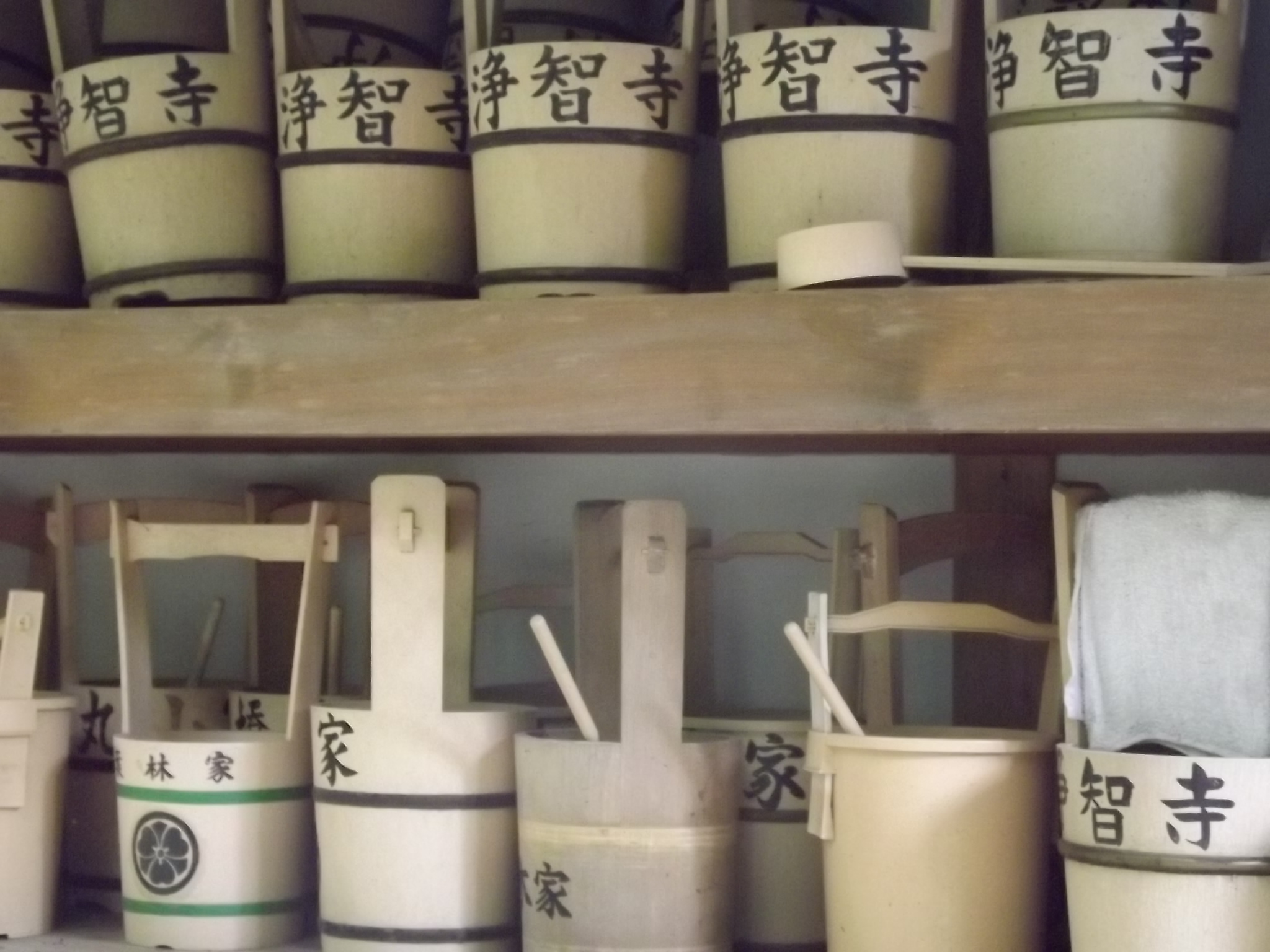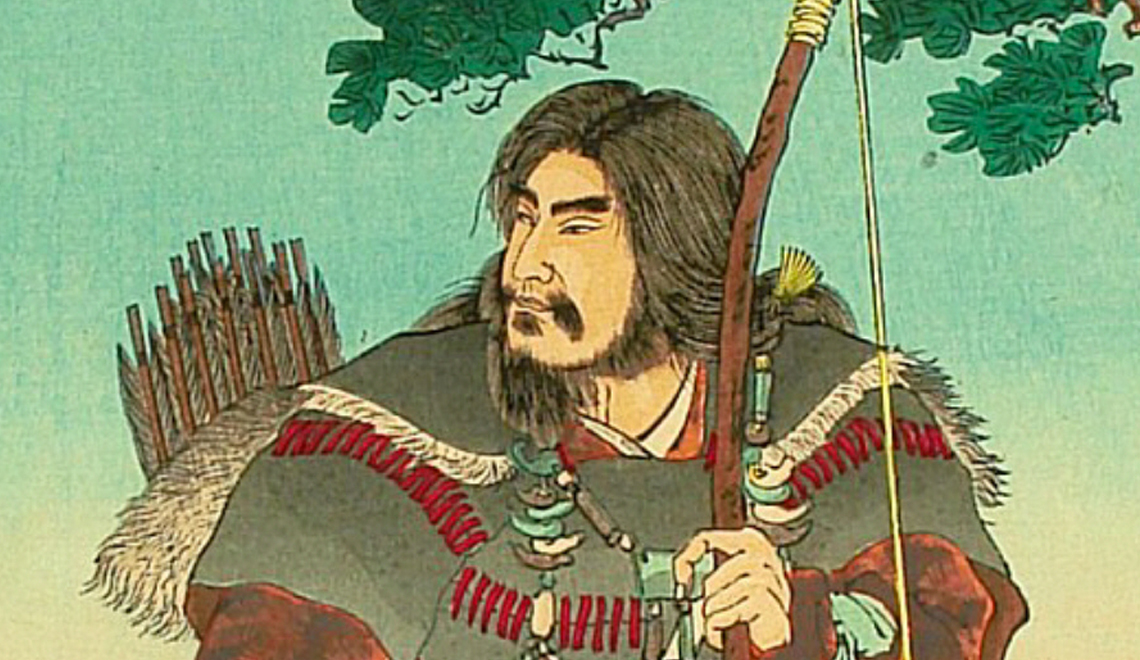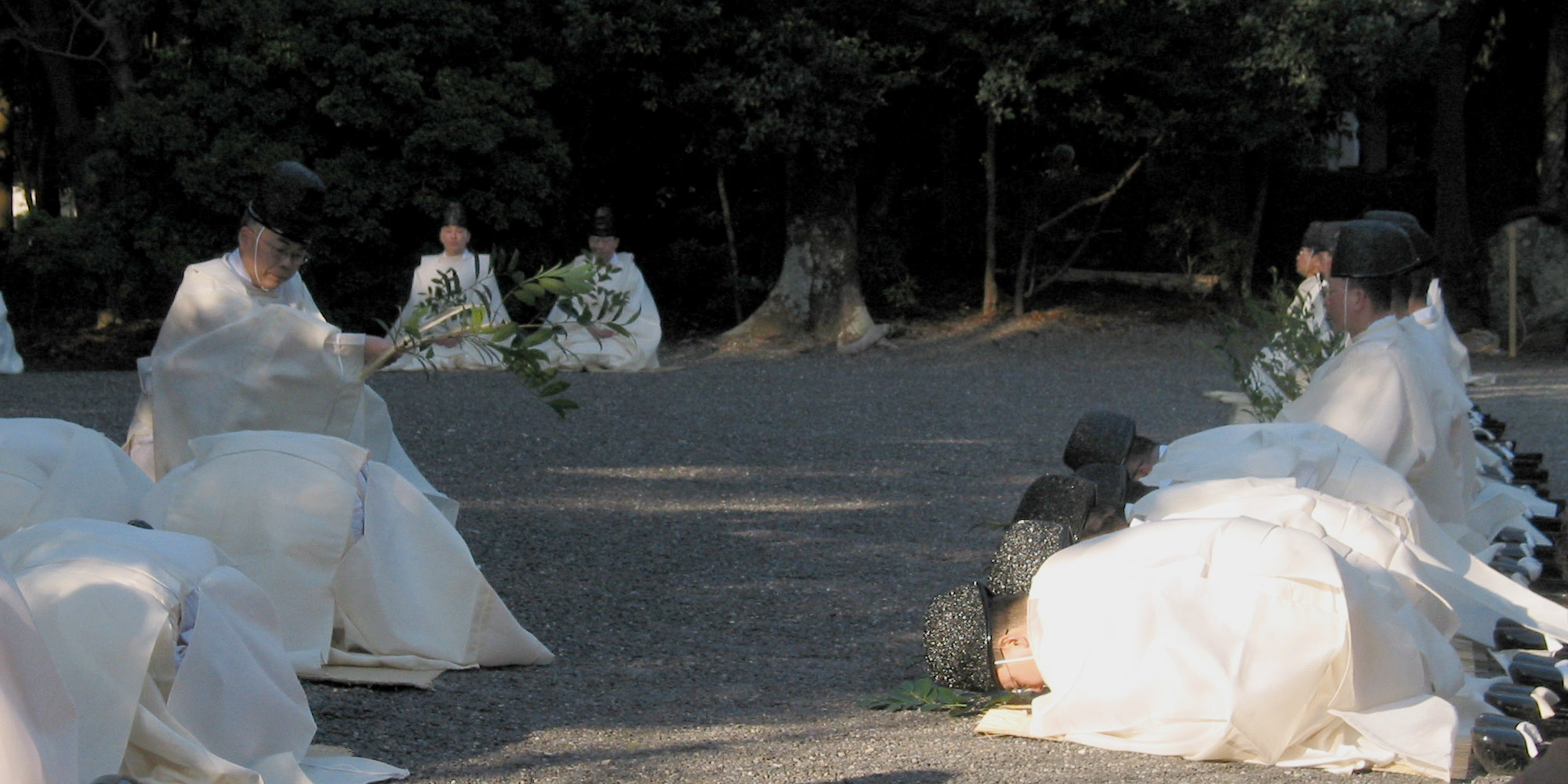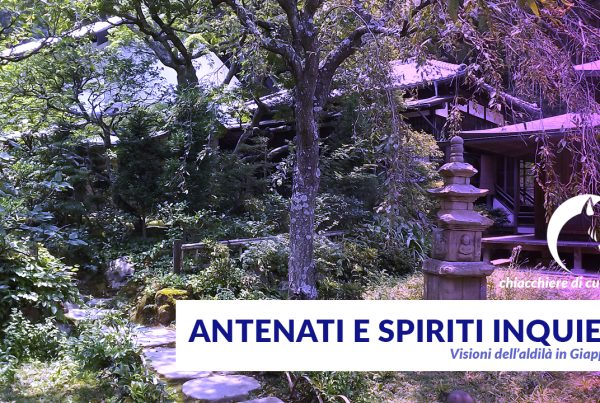A polluting person is always in the wrong. He has developed some wrong condition or simply crossed some line which should not have been crossed and this displacement unleashes danger for someone
Mary Douglas, Purity and Danger. An Analysis of Concepts of Pollution and Taboo
In every culture, purity, impurity and pollution are concepts with important social implications that go beyond the simple concerns for health and hygene; they imply a more intricate relationship between different actors within a given social structure. Within these relationships, impurity is variously interpreted as the sign of divine rage, as a break in the social order, as a violation of the corporal borders or as the proof of uncertainty and of a threat against the community.
What’s kegare in Japanese culture?
The japanese notion of kegare 穢れ, often translated with the word “impurity”, represents one of the most significant elements in the japanese ideological and ritual universe; the elimination of impurity and the establishment of a new condition of purity, is often the primary objective in various ritual practices during the year, and in different eras.
The word kegare is usually connected to other terms such as kitanashi キタナシ, oe 汚穢, aka 垢 (dirty), nigosu 濁 (muddy, impure), aku 悪 (evil), kurashi 黒 (dark, black), mashi 悪邪 (unjust, evil events), kō 凶 (misfortune), arashi 荒 (violent), utoshi 疎 (ignorant), shiko 醜鬼 (ugly, evil), maga 禍 (wickedness) and kagai 禍害 (evil, or also damage, trick). This terms clearly express feeling of hatred and physical repugnance , in contrast with more peaceful and virtuous terms employed to express purity, such as mei 明 (light, clear), aka 赤 (red, but also perfect, complete), ni 丹 (red, but also sincerity), seimei 清明 (pure and clear) and sei 正 (correct, just).
The notion of kegare implies other concepts such as that of imi 忌 (taboo, interdiction), the interpretation of purity (with the characters and the key factors regulating it) and the relation between sacred and profane in a complex dynamic that goes beyond the traditional dichotomic interpretation. The concept of kegare is also often associated with tsumi 罪, a notion hardly translatable since the english words “fault” or “guilt” often carry with them a strong christian implications.
Japanese Folklore studies and etymology
 From an etymological point of view, beside the possible derivation from kega 怪我 (wound, with specific reference with everything that causes a bleeding), japanese folklore studies (minzokugaku) tend to trace the origin of the term to the kanji 褻・枯れ (ke-kare), 気・枯れ (ki-kare) or 気・離れ (ki-hare). The variation in the first kanji implies a different interpretation of the same notion: when ke is written with the kanji 気, it represent the life energy, while with the kanji ke 褻, the meaning is that of profane. In this second case, ke is associated to shoku 食, the everyday action of feeding the body, and mō毛 (lit. “fur”, “wool”), and the agricultural products, including rice. The interpretation of ke as 褻 seems to include the idea of the life force (気) in everyday life (through the products for the nourishment and the conservation of the force).
From an etymological point of view, beside the possible derivation from kega 怪我 (wound, with specific reference with everything that causes a bleeding), japanese folklore studies (minzokugaku) tend to trace the origin of the term to the kanji 褻・枯れ (ke-kare), 気・枯れ (ki-kare) or 気・離れ (ki-hare). The variation in the first kanji implies a different interpretation of the same notion: when ke is written with the kanji 気, it represent the life energy, while with the kanji ke 褻, the meaning is that of profane. In this second case, ke is associated to shoku 食, the everyday action of feeding the body, and mō毛 (lit. “fur”, “wool”), and the agricultural products, including rice. The interpretation of ke as 褻 seems to include the idea of the life force (気) in everyday life (through the products for the nourishment and the conservation of the force).
Sakurai Tokutaro
Sakurai Tokutaro analyses the notion kegare as an intermediate element between ke and hare; in particular, he identifies a tripolar cycle beginning with ke, then moving towards kegare, and proceeding later with the introduction of hare in order to re-establish the original ke. In this vision, ke is the power of the sacred connected to the rice plant; the degeneration of ke, ke ga kakeru けがかける à け・かれ à けがれ corresponds to the danger of desolation and aridity of the year, and the ceremonies are the means to recover the vital energy. In this way, we can understand the role of the agricultural rites; ke is the symbolic expression of everyday life, the power of the housewife who manages rice supplies and ritual activities.
Namihira Emiko
The anthropologist Namihira Emiko is certainly the one who proposed the most significant reserches on the topic; she considers the three elements hare, ke and kegare, as three phases in a circular structure. Hare is the sacred, pure element, ke is the profane and the ordinary, and kegare is the impure element. Kegare is not contained within hare (as two aspects of the same power) but it is its clear opposite, ontologically different, characterized by impurity, pollution and death; hare emerges in order to eliminate kegare. Both are detached from the profane element. Shintō rites work to establish hare and completely erase kegare.
Itō Mikiharu
Another significant contribution is that of Itō Mikiharu who suggests that hare and kegare should not be considered as different opposing elements, but as structurally interdependent notion; the sacred and the profane in the Japanese society, he holds, are variable and interconnected notions, opposing Durkheim and his interpretation of these two elements as rigidly separated and opposed. In Itō’s analysis, hare and kegare share the same ambivalent character of sacredness, as a mix of pure and impure forces, lucky and inauspicious events; he recognizes an ambivalent nature to the notion of sacred, as a mysterious power, both good and evil. Hare and kegare are both opposed to the notion of zoku 俗, the ordinary (ke 褻). The opposition it therefore between the extraordinary, with its double character of pure and impure, and the norm of the ordinary, every day life.
Miyata Noboru
The great Miyata Noboru consacrates part of his researches to the analysis of these relations; considering ke as the everyday life, kegare is interpreted as something that dissipate this everyday life force. Miyata begins from the etymological analysis in three ways: 褻・枯れ (ke – kare, extinction of the ordinary), 気・枯れ (ki – kare, extinction of the life force) e 気・離れ (ki – hare, separation fra the life force). Instead of choosing between these possibilities, he suggest a similarity in the meaning of 褻・気. Hare (the festive, pure element) represent a specific, transformed space, the one of the religiosa celebration and public rituals (when the people wear the festive clothes, hare gi 晴れ着). Ke is the space of the ordinary, the private sphere where everyday life unfolds. Kegare si thus interpreted as a dissipation or a separation of the ordinary. Ke as ki, life essence and force at its fullest, is the ideal condition of existence; however, in everyday life, this energy is not always at its best, since there are plenty of dangers and damages. The human being, while living, consumes energies that slowly abandon the body (kegarete iru ケガレている); the rituals hare are interpreted as a means to reestablish the original condition of force and energy. They are a moment of pause, in specific times of the year, to regenerate the strength and cure the diseases.
Beyond etymology, there are different interpretation of the notion of kegare, that take into consideration several mythological and social aspects.
Japanse religions: Kami, Calamities and Tennō
The first analysis takes into consideration the notion nozione di kegare as it appears in ancient texts and mythical records. Since ancient times, human being live at mercy of the Great Nature of heaven and Earth, Tenchi Daishizen天地大自然; they live following the natural rythms, sensing the immense power of nature. This power is translated in the idea of the eight millions kami, who represent on one hand the creative force of nature, and on the other hand its incredible destructive power.

Detail of Emperor Jinmu – Stories from “Nihonki” (Chronicles of Japan), by Ginko Adachi. Woodblock print depicting legendary first emperor Jimmu, who saw a sacred bird flying away while he was in the expedition of the eastern section of Japan. Wikipedia
In the animism of the Jōmon era, the sacred, sei 聖, the profane, zoku 俗 and kegare 穢 – later identified with kami 神, human being (hito 人), and kemono 獣 (what is brutal, inhuman, savage) – are still vague and blurred notions, without a clear distinction; both the notions of sei and kegare may indicate two aspects of the power of the kami. What is sacred, seinaru mono聖なるもの is thus closely related to what is terrible and dangerous, kegare 穢れ: but while the sacred represents the positive aspects in human life, kegare is expression of catastrophies such as death, disease and calamities. Calamities (wazawai 禍 or 災い) are considered the result of the terrible power of the kami, caused by some kind of tsumi or kegare, with the consequent need for ritual purification at Court (oharai 大祓).
Japanese society, Order and Disorder
A second type of interpretation is that of cultural anthropology; here, kegare is considered as a power that endangers the established order, an external element that insinuates within a balanced system. Kegare is synonimous of danger, of something that eludes any categorization. In particular, kegare is connected to death and birth, because both these elements are moments of transition for society, during which communities loose a member or have to incorporate a new one; the moment of impurity coincide with a first intense moment of change, immediately after the physical death and immediately before the birth.
This interpretation also has another implication, in particular since in the ancient political system there was a wide share of the population over which imperial power had no control; they were the foreigners, the aliens placed concentrically around the imperial authority, and represented a threat to the stability of the state. Kegare is thus the symbol of political and cultural danger from the foreign territories; for similar reasons, kegare is applied to all those members of the society that differ from the norm due to phisical deformity or appearance (different hair color, physical handicap, etc) and are therefore pushed at the margins of society.
As we saw, in ancient times the human being perceived the terrible power of nature in a mix of awe and terror; sacred and kegare are not clearly separated and represent two aspect of the same power. In time we see more differentiation between the various aspects of nature, and a clear distinction between gods, humans and beasts. Kegare is represented by all those confused element laying at the borders, hard to define with clarity, and that endanger the given order.
Danger lies in transitional states, simply because transition is neither one state nor the next, it is undefinable[2]
Mary Douglas, Purity and Danger. An Analysis of Concepts of Pollution and Taboo
Impurity is this impossibility of a clear definition, this confusion, and the power lying within; it is the power of the margins threatening the inside, and has to be controlled and repelled.
This type of kegare does not identifies a specific element but is the result of a relationship in a given value system; both death and birth are in this sense elements that destroy the social order within a family, causing significant changes in the internal relationships. Here, in order to protect the system and prevent the external threat, different taboo or interdictions are employed, imi 忌, or kinki 禁忌. In the process of creation and definition of the social system, the central power specifies the outsiders; it is a movement from within, to push what is considered dangerous toward the outside. The person who points himself emperor (here the Yamato line), keeps the monopoly of the divine status; the subjects to this power, without any political authority, are men and women of the ordinary world. They are kōmin 公民 (the people, the working class) and hyakyshō 百姓, peasants and farmers. Outside, there are the kegai no min 化外の民, all those communities that didn’t vowed loyalty to the emperor; they are stigmatized as animals, kemono, uncivil being that carry the mark of tsumi e kegare.
Kegare as impurity and discrimination in Japan
A third line of analysis, similar to the one discussed above, is typical of the XX century researches, and links the notion of kegare to that of fujō 不浄, considered as a detachment from every form of purity, and put it as the basis for several mechanisms of social segregation and discrimination deployed for example against burakumin 部落人 and women. the ideology of the three impurities, sanfujō 三不浄 (kuro-fujō 黒不浄 or shie 死穢 death, shiro-fujō白不浄 or san’e産穢, birth and aka-fujō 赤不浄 or ketsue 血穢, blood), begins from within the Court and is reinforce with the buddhist influence. During Heian era, the notion of kegare becomes a central concern for the nobles; however, already in this period we can see the beginning of the actual discrimination against various social categories, women among them since they gather within their body all three impurities, but also disabled persona, and those with clear physical hindrances (with an unable body, gotaifugu 五体不具, as opposed to gotaimanzoku 五体満足, body without deformities), and against the inhabitants of mountains and islands.
YOU CAN CONTINUE READING ABOUT KEGARE IN JAPANESE CULTURE HERE
We see the same relation between the central power and the external peripheries.While in fact the central power impose its control over the agricultural lands and rice colture, it also becomes to define agriculture as the fulcrum of the state economy. A series of economic policies are thus reinforced to establish agriculture as the main activity of the Japanese people; among these, a series of norm are introduced that impose specific dietary restriction and taboos, under the influence of the buddhist precept not to kill, thus forcing a change in the food habits. In this same time, the external population, of the mountains (sanmin 山民 ) and the sea (kaimin 海民), whose life relied on hunting and fishing, were strongly influenced by these new regulations, in particular because, given their location, it was quite hard to ship agricultural foodstuffs, and this forced them to break dietary taboo and the state regulations about impurity.
The same preference for the agricultural activities is evident in the preference for their festivity: while agricultural rites are included in the ufficiale imperial calendar, festivities connected to mountains and seas – and to yama no kami and umi no kami – begin to acquire a negative meaning, since the new ideology brought to the classification of the external population as occupying a lower position in the society, almost dehumanized given their connection with hunting and fishing and therefore with kegare (death kegare).

Toshikoshi-Oharai (Oharai on tha last day of the year, at Daiichi-Torii-Nai-Haraedo, Naiku Ise city Mie Pref. Japan). Author Tawashi 2006.
This notion brought to the emergence of various purification rituals called harai (ハライo 祓), and kiyome (キヨメ o 清目), among which the most important is the Great Purification, Oharai 大祓 held at the beginning of the solar year, with the purpose to prevent calamities and misfortunes.



